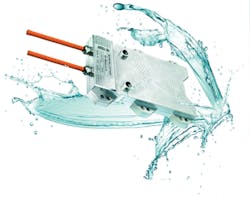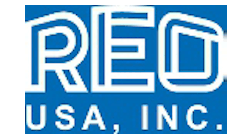Liquid Cooled Components High on REO-USA’s List for APTA
Temperature issues and space/weight constraints fuel demand for new, wider range of REO-USA liquid cooled components for auxiliary and main drive converters in transportation systems.
In most converter applications, and especially in the transportation industry, design engineers face heightened challenges ranging from cost pressures and space limitations, to product reliability and longevity issues. The solution for many lies in bypassing traditional air-cooled components for newer technology - liquid cooled converter components - which, over the past several years have been emerging as the Next Big Thing.
"We're seeing a strong trend toward liquid-cooled systems for hybrid, electric, rail and marine vehicle applications," reports Barbara Miller, Vice President of North American Operations for Indianapolis based component manufacturer REO-USA. She cites two key advantages:
- Liquid cooled components can reduce drive space requirements up to 70% or more.
- Liquid cooling drastically lowers component surface and/or housing temperatures.
Tested under the same load, the air cooled brake resistor runs at temperatures 70 percent higher than a liquid cooled REO-USA version and three times hotter than a fully encapsulated component. Liquid cooled drive components can last up to 50 percent longer.
"Liquid cooling is a win-win-win choice for design engineers, manufacturers and their customers," states Rick Jones, REO-USA's Sr. Director of Engineering, who also brings extensive prior power conversion and power quality experience in manufacturing and engineering to his current position.
"The space reduction versus air cooled devices enables engineers to design more-with-less into a host of new products, and/or retrofit more power into existing systems. Heat is the primary 'drive killer,' impacting reliability, performance and efficiency while shortening converter life. Properly designed liquid-cooled components dissipate and remove that heat, dramatically reducing stress on drive materials and extending life by as much as 50 percent. This is a huge advantage for virtually any manufacturer or end user, specifically in Railway applications, where decades of service can be anticipated.
Shrugging off environmental challenges - alleviating electronic noise pollution
Jones indicated protection ratings are another key factor in selecting liquid cooled VFDs.
"Especially in outdoor railway operations, drives and supporting components have to handle whatever abuse Mother Nature and mankind provide. Look for a NEMA 4X protection rating and a pollution degree of PD4; this verifies components' ability to withstand dust, sand, rain, sleet, freezing conditions and saltwater, you name it."
Simply put, REO-USA resistors and reactors get the job done.
"Liquid cooled is one of our specialties," sums up Jones, noting that REO-USA's range of power offerings is the widest in the industry.
"We're an engineering company," emphasizes Miller. "Along with manufacturing, our strength in this area enables us to collaborate closely with company product developers, to select application-specific drive components from our extensive array of standard options - and/or tailor - in some cases, fully customize - to precisely fit their needs."
Power is the key "range reference point" when choosing liquid cooled VFDs (e.g. range of currents for REO-USA's CNW MB liquid cooled line reactor is 100 - 1200 amps). Miller says the greater your component supplier's "standard range," the better.
"Liquid cooled converter components within a provider's standard range help buyers stay within budget parameters. Time-critical deadlines can also more easily be met when your application-specific component is ready and waiting."
Various types of water cooling further match reactors and resistors to customer needs.
- Open construction with individual coils encapsulated, to collect heat directly at the source for removal from the component.
- Encapsulating the components on a metal plate with integrated cooling channels. This permits pinpointed cooling for high performance, and ensures simple integration into existing cooling systems.
- Fully encapsulated components with "water pockets" - a design that combines efficient heat removal while also obtaining high protection ratings (e.g. NEMA 4X).
"In short, we can adapt standard-range products or customize liquid cooled components for virtually any specs imaginable. Today's 'custom' frequently becomes tomorrow's standard," Jones adds, noting that past years of collaborating with customers to match diverse applications has helped REO-USA continually expand its range of liquid cooled offerings.
All of which is helping the company generate a following not only among innovative product developers, but also system integrators.
Easily integrated system options; helping to keep 'power electronics' cool
Then there's REO-USA's ColdPlate, a sub-structural component that can be used to cool an inverter, IGBTs, rectifier circuits or other power electronics. The ColdPlate includes a filter, reactor, resistor or combination, with a network of cooling channels that can be connected to a water cooling system. Users simply mount the electronic devices on the ColdPlate for additional cooling.
"This further illustrates the diverse solutions available to design engineers and system integrators via liquid cooled components," Jones emphasizes.
"From Input to Output and everything in-between, we're the only manufacturer in North America that offers it all," Miller asserts. "Whether it's in a single system package - what we call REO Unity - or served a la carte, this makes life easier for drive component buyers as well as system integrators."




